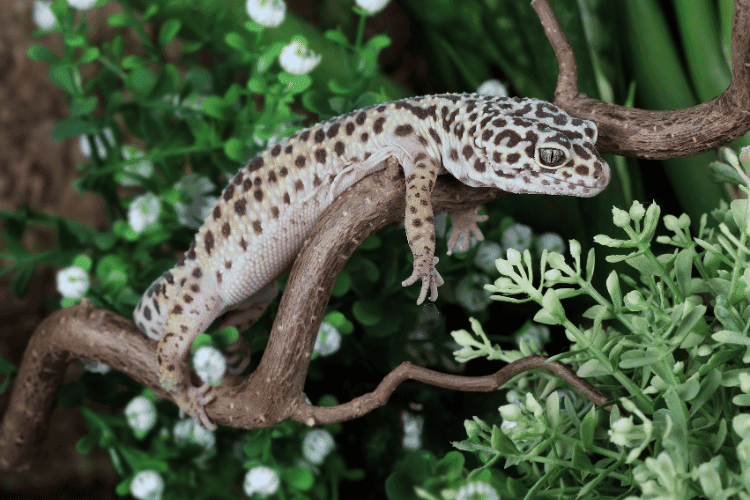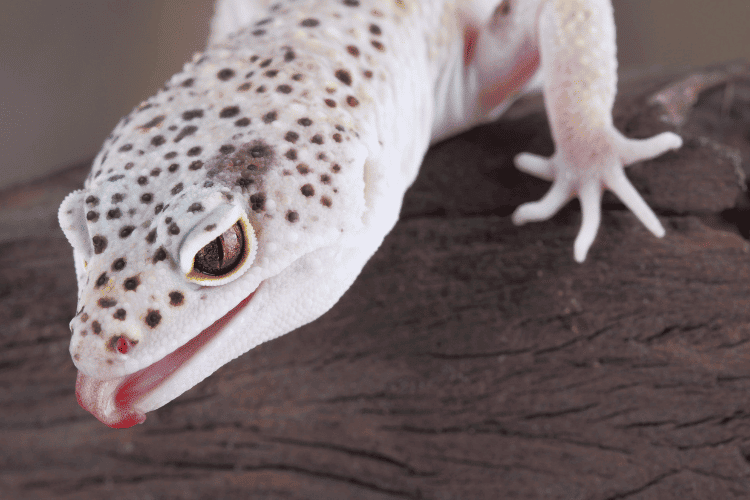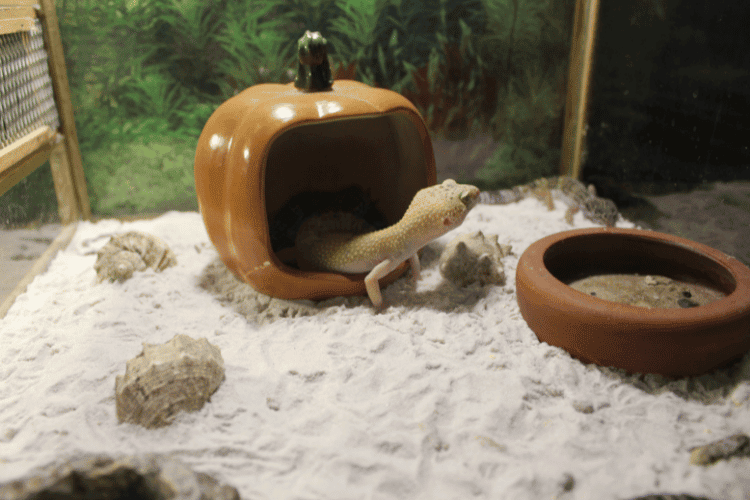
Leopard geckos, or Eublepharis macularius, are one of the most popular pet lizards in the world. This gecko species is known for its friendly temperament, easy care, and beautiful coloration. But did you know that leopard geckos aren’t actually arboreal lizards?
The term “arboreal” refers to animals that live most of their lives in trees. Arboreal animals have adapted so much to that lifestyle that their body parts look very different from ground dwellers.
So, are leopard geckos arboreal? The answer is no, they are not. Leopard geckos are ground-dwelling terrestrial lizards. This is because leopard geckos are more vulnerable to predators when they are high up in trees.
What Does It Mean to Be Arboreal?
The term “arboreal” refers to animals that live in trees. Arboreal animals have adapted to living in trees, and they often have physical characteristics that help them climb, such as sharp claws and sticky toe pads.
Some examples of arboreal animals include:
- Monkeys
- Lemurs
- Squirrels
- Sloths
- Tree frogs
- Chameleons
- Gibbons
- Orangutans
Arboreal animals have a number of advantages over animals that live on the ground. They’re able to escape predators by climbing up into trees. They also have a better vantage point from which to see food and potential mates.
However, there are also some disadvantages to being arboreal. Arboreal animals are more exposed to the elements, such as wind and rain. They are also more likely to fall from trees, which can be fatal.
Despite the challenges, arboreal animals have been able to thrive in a variety of habitats, from tropical rainforests to temperate forests.
Are Leopard Geckos Arboreal?
Even though leopard geckos aren’t arboreal lizards, they do have some physical characteristics that make them seem like they could be.
For example, leopard geckos have sticky toe pads that help them grip surfaces. However, these toe pads are not as sticky as the toe pads of arboreal lizards, and they aren’t strong enough to support the weight of a leopard gecko for long periods of time.
In the wild, leopard geckos live in rocky deserts and grasslands. They often burrow into the ground to escape the heat of the day. They also hide under rocks and other objects. Leopard geckos are nocturnal, so they are most active at night. They hunt for insects and other small prey.
The Reasons Leopard Geckos Prefer to Stay Low to the Ground
In captivity, leopard geckos can still climb, but they will usually prefer to stay low to the ground. If you are creating a habitat for a leopard gecko, it’s important to provide plenty of hiding places for them to feel secure.
Leopard geckos prefer to stay low to the ground for a number of reasons.

Predation
Leopard geckos are preyed upon by birds and other animals, and they are more vulnerable to predators when they are high up in trees.
Staying low to the ground makes them less visible to predators. They can also hide under rocks or other objects if they feel threatened.
Food
Leopard geckos are insectivores, and they prefer to hunt for their food on the ground. They can find a wider variety of insects on the ground than they can in trees. They also have a better chance of catching their prey when they are close to the ground.
Temperature
Leopard geckos are ectotherms, which means that they rely on external sources of heat to regulate their body temperature.
The ground absorbs heat from the sun, so staying low to the ground helps leopard geckos to stay warm. They can also dig into the ground to cool down if they get too hot.
Humidity
Leopard geckos need high humidity levels to thrive, and the ground is often more humid than the air. Staying low to the ground helps leopard geckos to stay hydrated. They can also absorb moisture from the ground through their skin.
Security
Leopard geckos are prey animals, so they feel more secure when they are close to the ground. They can easily hide under rocks or other objects if they feel threatened. This is especially important for leopard geckos in the wild, where they are constantly under threat from predators.
Creating the Perfect Habitat for a Leopard Gecko
Leopard geckos are native to India and Pakistan. These nice little lizards can live for up to 20 years in captivity, which makes them amazing pets! They just need you to recreate their favorite native surroundings.
Here are some tips on how to create the perfect habitat for a leopard gecko:
- Size: The terrarium should be at least a 20-gallon tank for one leopard gecko. If you’re planning on getting more than one adult gecko, you will need a larger terrarium.
- Terrarium type: A glass terrarium is the best option for leopard geckos. It allows you to see your gecko clearly, and it’s easy to maintain, so you can keep your pet in a clean environment.
- Substrate: The substrate is the material that you’ll put on the bottom of the
terrarium . A good substrate for leopard geckos is a mix of sand and soil. This will help to keep theterrarium clean and humid.
You can also put a reptile carpet that your gecko can lounge on for a bit more comfort.
- Hides: Leopard geckos need plenty of hiding places in their
terrarium . You can use rocks, logs, or even plastic hides. - Heat lamp: Leopard geckos need a heat source to stay warm. The heat lamp should be placed on one side of the
terrarium so that your gecko can move to a cooler area if they get too hot. - Humidity hide: Leopard geckos also need a humidity hide. This is a small container that you can fill with moist substrate. This will help to keep your gecko hydrated.
- Water bowl: Leopard geckos need a shallow
water bowl to drink from. Thewater bowl should be large enough for your gecko to soak in, but not so large that they can drown. - Food: Leopard geckos are insectivores, so they need to eat a diet of insects. You can feed them crickets, mealworms, or roaches.
- Supplements: A healthy gecko also needs to take extra nutrition in the form of calcium supplements and vitamin D3. You can add these supplements to their food or give them a separate supplement dish.

Conclusion
One time, I had a leopard gecko named Spot. Spot was a curious little guy, and he loved to explore his
He was clinging to the glass with his toe pads, and he looked like he was struggling. I gently helped him down, and I made sure to add more hiding places to his
If you’re thinking about getting a leopard gecko as a pet, it’s important to keep in mind that they are not arboreal lizards. They’ll be perfectly happy living in a


